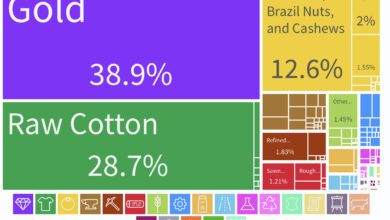5 Things You Should Know About Kratom Legality In Canada
As herbal remedies and natural supplements gain popularity worldwide, the complex regulatory status of certain botanicals has generated much discussion. One plant in particular that elicits ongoing debate regarding its appropriate oversight is Kratom.
With the availability and use of this ancient medicine increasing internationally, determining prudent policies surrounding it has presented challenges. However, its legal status varies around the world. In Canada, there has been ongoing debate about how Kratom should be regulated.
This article will explore five vital things you should know about Canada’s current state of kratom legality.

What is Kratom?
Notably, Kratom is a tropical evergreen plant native to Southeast Asia. Scientifically known as Mitragyna speciosa, it belongs to the Rubiaceae family of plants. Kratom leaves contain compounds called alkaloids that can have psychotropic (mind-altering) effects when ingested.
The alkaloids in Kratom are mitragynine and 7-hydroxy mitragynine, which are partially responsible for their stimulant and soothing properties. As a result, the question is Kratom legal in Canada has emerged, as its regulatory status differs in various parts of the country. There are several distinct varieties of the kratom tree, differentiated by the color of their veins:
- Red vein kratom varieties are generally more sedating as they contain higher levels of the alkaloid 7-hydroxymitragynine, which has soothing effects. Red Bali and Red Indo are examples of popular red vein strains.
- Green vein types tend to be more stimulating as they have higher concentrations of the alkaloid mitragynine, which can elevate mood and energy levels. Common green vein strains include Green Malay and Green Maeng Da.
- White vein kratom also has stimulating qualities since it contains more mitragynine than 7-hydroxy mitragynine, making it uplifting and capable of improving mood. White Borneo and White Thai are white vein varieties often used for energizing properties.

Things You Should Know About Kratom Legality In Canada
- Current Legal Status
The legal status of Kratom in Canada provides individuals significant personal autonomy while further research continues. Neither controlled nor approved as a health product yet, Kratom exists in a pragmatic regulatory limbo that stops short of an outright ban.
This balanced approach respects individual choice by allowing adults open access to Kratom for personal purposes. Though lacking comprehensive standards currently, consumers can choose Kratom freely without severe legal consequences from coast to coast.
The existing policy status quo reflects Canada’s measured response compared to some international jurisdictions. While uncertainties linger, this moderate legislative positioning keeps discussion and consideration ongoing with evolving science.

- Importation Regulations
Since Kratom does not grow natively in Canada’s climate, the country relies on imports to meet demand. Southeast Asia is a significant supplier as Kratom occurs naturally there. Vendors can obtain ample supplies at low costs from countries like Thailand and Indonesia, where cultivation is widespread.
While possession of Kratom is permitted within Canada, import regulations are more stringent. To ensure safety, commercial-scale importers must abide by Health Canada guidelines regarding labeling, quality control, and intended use. Large personal imports are generally prohibited to prevent unregulated redistribution.
Prudent oversight balances access with protections, given Kratom’s legal ambiguity. Clear import laws help regulate trade and use appropriately in this developing marketplace without an outright ban.
- Sale and Distribution
Notably, while possession of Kratom is legal across Canada, the sale and distribution of kratom products are regulated at the provincial level. Laws vary significantly between provinces in terms of how and where Kratom can be sold.
In some provinces, the sale of Kratom intended for human consumption is prohibited outright. Others allow sales but ban marketing kratom as a potential consumption method. Still others permit sale only in specialty shops rather than mainstream retail outlets. Online sales across provincial boundaries exist in a gray area.
This fragmentation makes the legal purchase of Kratom depend on your location within the country. More explicit federal guidelines could create more consistency for both consumers and sellers. Thus, regulated sales are permitted in some forms in most provinces, but rules differ greatly from province to province, introducing complexities for this industry.

- Quality and Safety Considerations
Also, with Kratom currently an unregulated product in Canada, there are no mandatory manufacturing or safety standards that vendors must adhere to. This means the quality and contents of kratom products can vary widely between suppliers.
Hence, consumers need a guarantee about the identity, potency, contaminants, or freshness of what they are purchasing. Products may be mislabeled or contain heavy metals, pesticides, or other pollutants if sourced and processed improperly.
This poses risks, especially for those with pre-existing health issues or if consuming large doses regularly. Establishing good production practices and required analytical testing would help ensure that only high-quality, pure Kratom reaches the Canadian market.
Therefore, strict sourcing guidelines could also curb supply chain concerns and ensure product safety, assuring both consumers and regulatory bodies, given Kratom’s non-controlled status.
- Advocacy and Awareness Efforts
As the legal regulations surrounding Kratom continue to be reviewed in Canada, several advocacy initiatives have emerged, including the following;
- Some advocates regularly engage with government bodies to address the spread of misinformation. They also help fund studies examining Kratom’s composition, effects, and safety profile within the Canadian context.
- Online communities aim to connect Canadians using Kratom safely while also documenting any adverse reactions for reporting to Health Canada’s monitoring program.
- Others have urged open dialogue over bans, citing how criminalization often pushes use underground with unintended risks based on lessons from policies in other nations.
Final Thoughts
In summary, Kratom’s legal status in Canada remains to be seen with differing laws at federal, provincial, and local levels. For now, personal possession and responsible use of plain leaf Kratom is permitted, but Canadians should stay informed as regulations and classification may change as more research is done. Continued awareness of updates will help the public understand where Kratom’s legality stands across the country.



